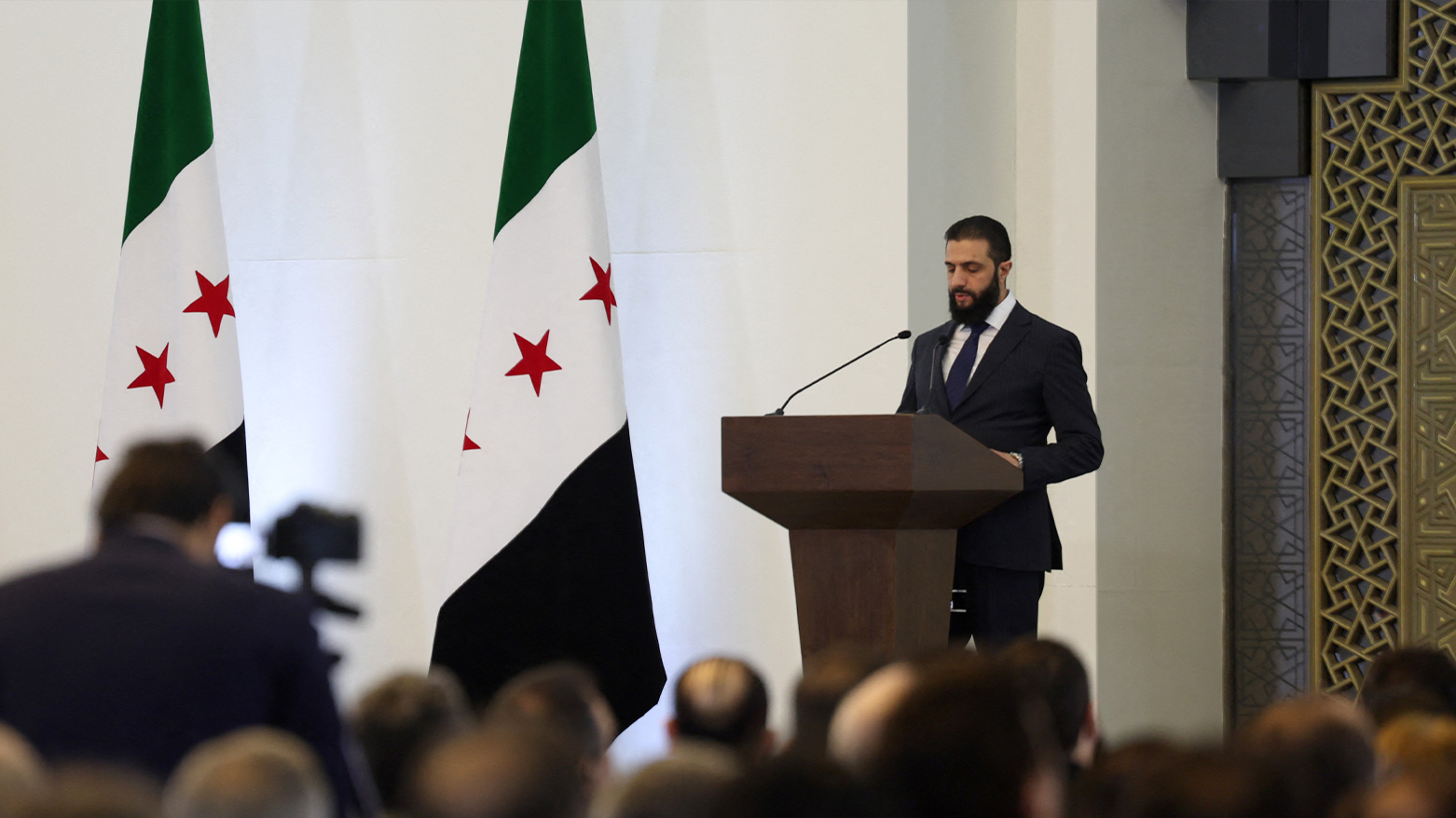New Syrian Cabinet Formed, But Is It Truly Inclusive?
Although al-Sharaa’s cabinet includes a mix of technocrats and minority representatives, the most powerful ministries, including foreign affairs, defense, and interior, remain in the hands of al-Sharaa’s close allies from the rebel faction that led Assad’s ouster.

By Kamaran Aziz
ERBIL (Kurdistan 24) — In a landmark speech inaugurating Syria’s new transitional cabinet, President Ahmed al-Sharaa declared the formation of his 22-member government as a turning point in the country’s post-Assad era. While the announcement was framed as a beacon of hope and a pledge to national unity, the Kurdish dimension has also drawn attention.
According to The New York Times, one significant gesture came in the form of appointing a Kurd as Minister of Education, a move seen as a symbolic recognition of the Kurdish community’s role in the country’s future. Al-Sharaa has also reportedly reached an agreement with the U.S.-backed Kurdish-led militia to incorporate its forces into the national military — a step that could be pivotal in consolidating control and promoting broader ethnic integration, though the practicalities of the merger remain uncertain.
Meanwhile, leading international observers and rights advocates have raised serious concerns about the limits of inclusivity and the continued centralization of power.
"At this historic moment, we witness the birth of a new phase in our national journey," al-Sharaa said, pledging transparency, institutional reform, and economic revival. Yet, according to reports by The Washington Post, The New York Times, and The Wall Street Journal, the structure of the newly formed government appears to maintain much of the same top-down governance that has long plagued Syrian politics.
Although al-Sharaa’s cabinet includes a mix of technocrats and minority representatives — including Raed al-Saleh of the White Helmets and Hind Kabawat, a Christian woman and prominent civil society figure — the most powerful ministries, including foreign affairs, defense, and interior, remain in the hands of al-Sharaa’s close allies from the rebel faction that led Assad’s ouster.
As The New York Times noted, this composition has become a litmus test for whether the new leadership would deliver on promises of a truly representative government.
According to The Washington Post, only one woman was appointed to the cabinet, and the new constitutional declaration abolished the role of a prime minister while granting al-Sharaa extensive executive powers.
This setup has drawn sharp criticism from constitutional experts and human rights advocates. The Washington Post quoted Rim Turkmani, a senior research fellow at the London School of Economics, as warning that "We need more than one person at the top," emphasizing that the interim framework already undermines the transitional government’s potential for meaningful change.
Despite rhetoric emphasizing justice and inclusivity, the transitional government’s central structure reinforces presidential authority over the judiciary and legislature. The interim constitution allows al-Sharaa to appoint judges and a third of parliament, and though it includes protections for freedom of expression and an independent judiciary, critics say these measures fall short of establishing real checks on executive power.
Meanwhile, the backdrop to these political developments remains volatile. Earlier this month, over 1,000 civilians were killed in violent clashes on Syria’s coast between government forces and remnants of the Assad regime, according to The New York Times. The bloodshed, particularly among the Alawite minority, reignited fears of sectarian retaliation and underscored the fragility of Syria’s transition. The government has vowed to investigate, but skepticism lingers.
The cabinet formation also comes amid high international stakes.
As The Wall Street Journal reports, al-Sharaa’s government is seeking recognition and the lifting of sanctions that have crippled Syria’s economy. While the EU and UK have eased some restrictions, key sanctions remain.
Washington, under the Trump administration, has frozen efforts by the previous Biden administration to gradually relax penalties. Western powers have made it clear: real political reform and human rights protections are prerequisites for deeper engagement.
Domestically, al-Sharaa has attempted to consolidate control by merging ministries — such as combining Industry, Trade, and Economy into a single Ministry of Economy and Industry — and launching initiatives in energy reform, education modernization, and investment in AI and digital infrastructure. He also announced new ministries dedicated to youth, sports, and emergency response. Yet, as The Wall Street Journal points out, many see the government as a hybrid of technocrats and loyalists, raising doubts about whether it can deliver on its promises without broader political change.
Efforts to co-opt Syria’s diverse communities have included symbolic appointments. A Kurd was named Minister of Education — a nod to a community long marginalized by the state — and al-Sharaa has reportedly signed a tentative agreement with the U.S.-backed Kurdish-led militia to integrate its forces into the national military. But the path forward is uncertain, as the details of that merger remain unresolved.
International dynamics are no less complicated. Syria’s new government is negotiating with Russia over the future of its military presence, while Israel continues airstrikes on what it describes as threatening military positions. As The Wall Street Journal noted, the collapse of the Assad regime has had seismic regional consequences, weakening allies like Russia and Iran and shifting the balance of power in the Middle East.
“This is a government of change and reconstruction,” al-Sharaa said during the ceremony. But critics argue that the real test lies not in rhetoric, but in power-sharing, institutional integrity, and protections for minority and civil rights.
As Syria embarks on this transitional phase, the world watches closely. Whether this government becomes a genuine engine for reform — or simply a rebranding of past authoritarianism — remains to be seen. What is clear, according to The New York Times, is that the restoration of diplomatic and economic ties hinges on far more than ceremonial speeches. It depends on real structural transformation, inclusivity, and a departure from the centralized rule that has long defined Syrian governance.
